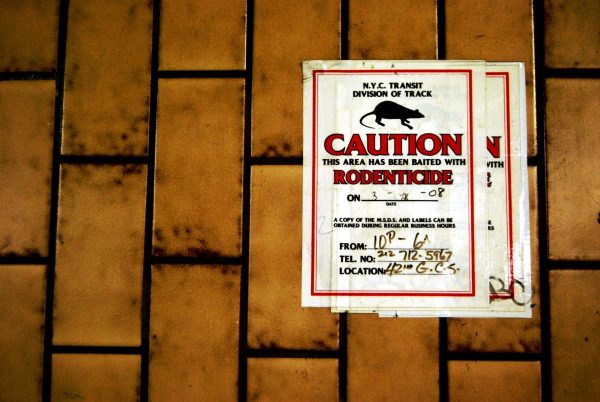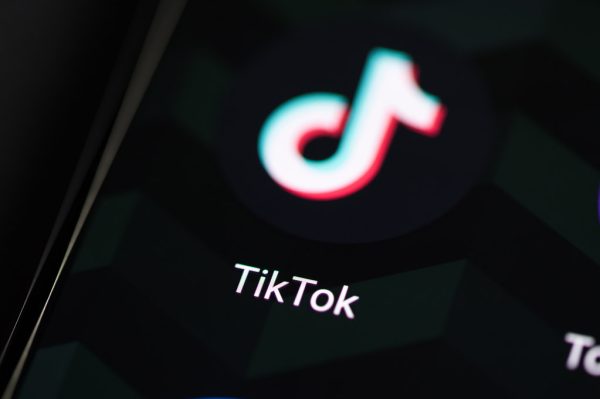Living (and believing) inside an echo chamber
As technology becomes a bigger part of today’s society, so does society’s reliance on it. Millennials have developed an extreme reliance on social media, Facebook in particular, as their source of news.
The concern with this approach is that Facebook’s algorithm is specifically programmed to display items of relevance to a user’s own tastes and preferences, meaning a user is only exposed to articles expressing a view with which they agree.
A liberal’s news feed is filled with mostly liberal news, real or fake, and a conservative’s news feed is filled with mostly conservative news, similarly real or fake.
Often times, this results in a lack of thorough understanding of an issue. If a user is not presented with information from all points of view, including pros and cons of an issue, they can never truly understand it.
This lack of understanding became a glaring problem during the recent presidential election.
Many people are criticizing social media platforms, Facebook in particular, for allowing users to not only sit comfortably inside ideological echo chambers, but for allowing a plethora of fake news billed as “news feeds” to appear without challenge.
In response to the backlash, Facebook CEO Mark Zuckerberg released a statement on his own Facebook account.
“Of all the content on Facebook, more than 99 percent of what people see is authentic,” he wrote. “Only a very small amount is fake news and hoaxes. The hoaxes that do exist are not limited to one partisan view, or even to politics.”
In the face of mounting criticism, however, Facebook announced Thursday that it is going to make it easier for users to report fake news and that it will partner with independent fact-checking outlets to curb false content from appearing in feeds.
While social media outlets overall continue to deny the spread of fake news on their users’ news feeds or that it is very limited in scope, the fact remains that it exists–and it is dangerous.
According to Newsweek, “Among millennials who used Facebook to find news, 70 percent say that they will click and read the news stories they encountered. Forty-two percent regularly post or share news stories with their Facebook friends.”
The false stories that seem, on the surface, hard to believe even at first glance, travel around the Internet with incredible rapidity and are shared countless times.
Among these stories during the recent election cycle, The New York Times reported, were the following: Hillary Clinton’s campaign pollster, Joel Benenson, wrote a secret memo detailing plans to “salvage” Mrs. Clinton’s candidacy by launching a radiological attack to halt voting (merrily shared on Twitter by Roger Stone, an informal adviser to the Donald J. Trump campaign); the Clinton campaign senior strategist John Podesta practiced an occult ritual involving various bodily fluids; Mrs. Clinton paid public pollsters to skew results (shared on Twitter by Donald Trump Jr.); and there was a trail of supposedly suspicious deaths of myriad Clinton foes (which The Times columnist Frank Bruni heard repeated in a hotel lobby in Ohio).

A fake news story about a pizzeria in Washington, D.C., has endangered the store’s employees.
The most specious of the fake stories emanated out of Washington, D.C., where it was rumored that a pizzeria named Comet Ping Pong was home to a child abuse trafficking ring headed by Mrs. Clinton and her campaign chief, Mr. Podesta.
The story has repeatedly been labeled false and ludicrous, but employees have been harassed and threatened ever since it went viral. It reached its low point on Dec. 4 when Edgar Maddison Welch, a 28-year-old man from Salisbury, N.C., drove to the store with a rifle, which he fired inside, in a quest to find and free the “abused children.”
The fake story, originally titled “‘Pizzagate’: How 4Chan Uncovered the Sick World of Washington’s Occult Elite,” had definitive consequences. Innocent people have begun to be affected by the widespread dissemination and readership of fake news.
A common misconception among social media users is that all articles coming across their news feeds are real. Unfortunately, this is far from true.
Considering the fact that most of the aforementioned articles were spread via social media prior to Election Day on Nov. 8, it is very probable that many eligible voters were swayed by the fake news stories and it influenced how they voted.
Mr. Welch may have been arrested and is likely facing jail time, but he is just one of many. Others taken in and misled by “pizzagate” have shown up on the patio of the shop looking for the alleged tunnels that fake news stories said were used to traffic the children.
CBS News aired a clip of a woman claiming that “all of this is an underground tunnel that helps take the kids and transport them back and forth so they can can do these rituals. They are putting a lot of curses and spells over the city. They are kidnapping the children who are missing. They were never missing because D.C. knows where they are.”
The owner of the pizza shop, James Alefantis, has admitted to receiving numerous threatening phone calls and pieces of hate mail.
Michael G. Flynn, son of Mr. Trump’s choice for National Security Advisor, Michael T. Flynn, was asked to step aside from the transition team because of a social media post that helped to spread the story.
It makes it hard for the average American to discern what is real and what is fake, and this is a concern fraught with enough peril that President Obama himself weighed in on the issue. Mr. Obama summed it up nicely.
“In an age where there’s so much active misinformation, and it’s packaged very well, and it looks the same when you see it on a Facebook page or you turn on your television, where some over-zealousness on the part of a U.S. official is equated with constant and severe repression elsewhere, if everything seems to be the same and no distinctions are made, then we won’t know what to protect,” President Obama was quoted as saying in The New Yorker. “If we can’t discriminate between serious arguments and propaganda, then we have problems.”

Jyotika is a senior, and hopes to enjoy her final year at AMSA. She thoroughly enjoys speaking and having a spirited debate, which is shown in her passion...






Martha Richardson • Dec 17, 2016 at 12:15 pm
Neil Postman and others have been discussing this phenomenon for years. For better or worse, the technology has finally reached a tipping point — one which allows for the widespread dissemination of misinformation. This combined with ignorance (either willful or situational) is a recipe for disaster. The cure is education, media literacy and a critical (even skeptical) attitude.
Alvarez • Dec 16, 2016 at 2:19 pm
Facebook is new. Echo chambers are not. Social circles (the real echo chambers) have been in place for a long time. Fake news are a problem. Facebook is just making evident that many people lack ability to distinguish between a reputable source of information and one that is not. That is a whole different problem. Maybe even bigger than echo chambers and fake news.